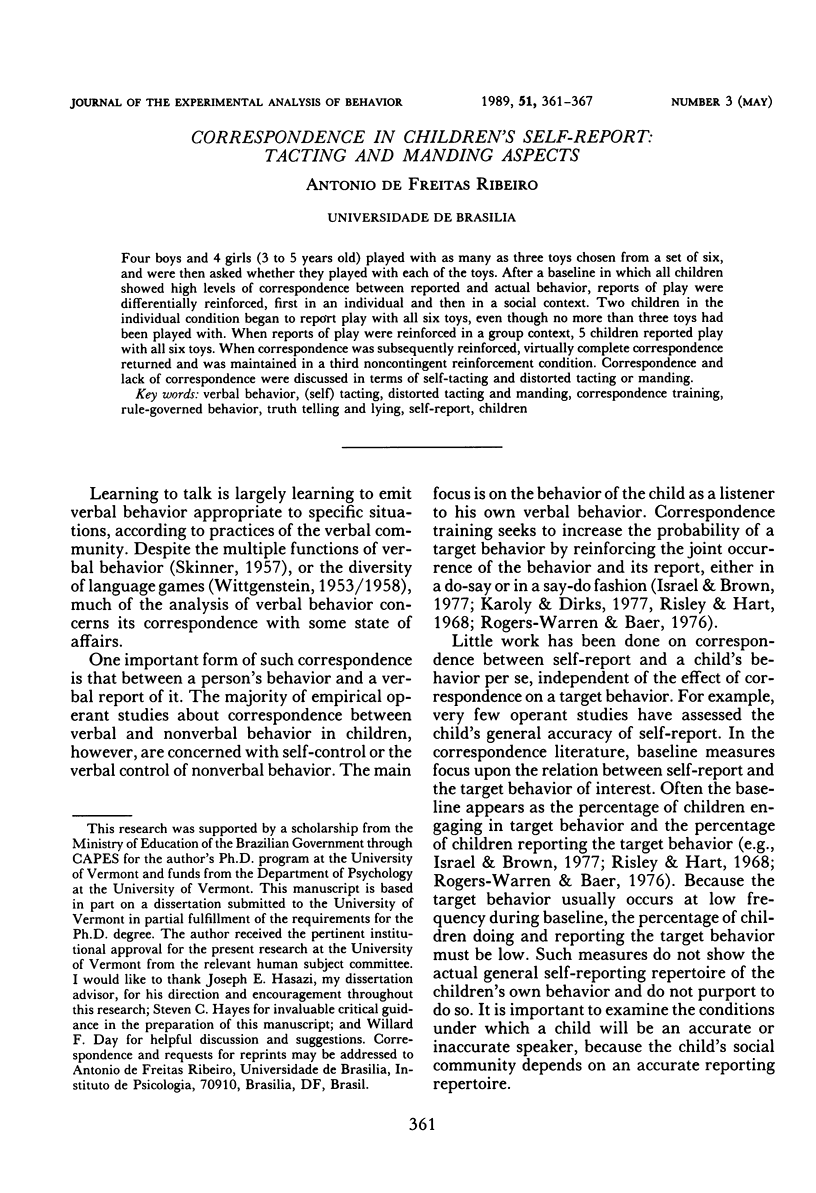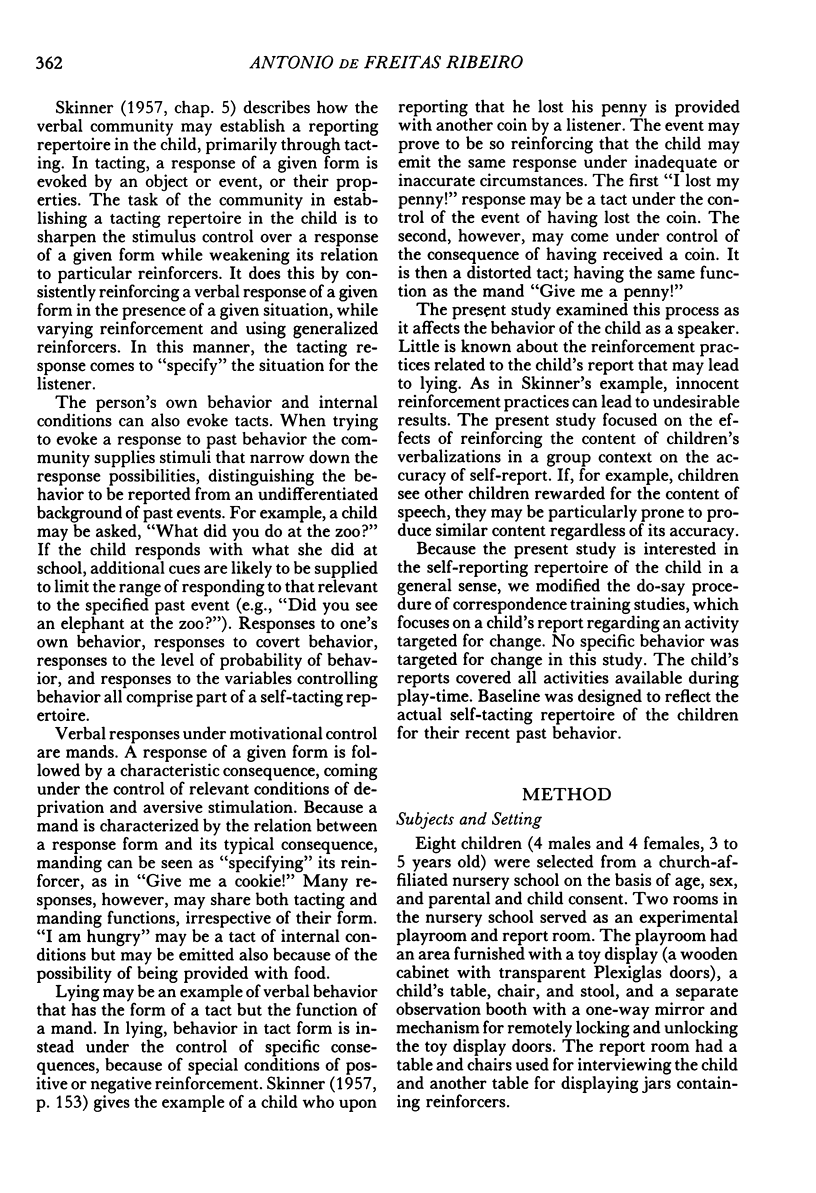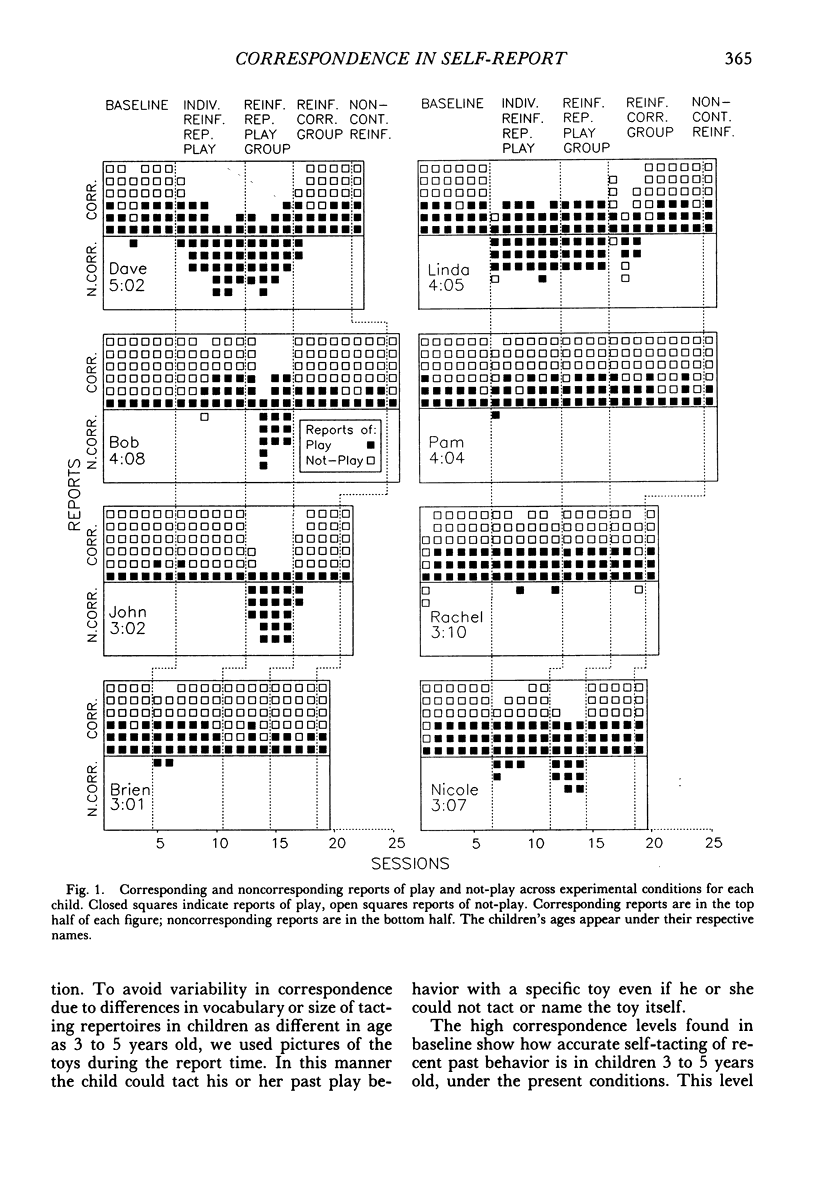Abstract
Four boys and 4 girls (3 to 5 years old) played with as many as three toys chosen from a set of six, and were then asked whether they played with each of the toys. After a baseline in which all children showed high levels of correspondence between reported and actual behavior, reports of play were differentially reinforced, first in an individual and then in a social context. Two children in the individual condition began to report play with all six toys, even though no more than three toys had been played with. When reports of play were reinforced in a group context, 5 children reported play with all six toys. When correspondence was subsequently reinforced, virtually complete correspondence returned and was maintained in a third noncontingent reinforcement condition. Correspondence and lack of correspondence were discussed in terms of self-tacting and distorted tacting or manding.
Keywords: verbal behavior, (self) tacting, distorted tacting and manding, correspondence training, rule-governed behavior, truth telling and lying, self-report, children
Full text
PDF






Selected References
These references are in PubMed. This may not be the complete list of references from this article.
- Catania A. C., Matthews B. A., Shimoff E. Instructed versus shaped human verbal behavior: Interactions with nonverbal responding. J Exp Anal Behav. 1982 Nov;38(3):233–248. doi: 10.1901/jeab.1982.38-233. [DOI] [PMC free article] [PubMed] [Google Scholar]
- Hayes S. C., Brownstein A. J., Zettle R. D., Rosenfarb I., Korn Z. Rule-governed behavior and sensitivity to changing consequences of responding. J Exp Anal Behav. 1986 May;45(3):237–256. doi: 10.1901/jeab.1986.45-237. [DOI] [PMC free article] [PubMed] [Google Scholar]
- Israel A. C., Brown M. S. Correspondence training, prior verbal training, and control of nonverbal behavior via control of verbal behavior. J Appl Behav Anal. 1977 Summer;10(2):333–338. doi: 10.1901/jaba.1977.10-333. [DOI] [PMC free article] [PubMed] [Google Scholar]
- Risley T. R., Hart B. Developing correspondence between the non-verbal and verbal behavior of preschool children. J Appl Behav Anal. 1968 Winter;1(4):267–281. doi: 10.1901/jaba.1968.1-267. [DOI] [PMC free article] [PubMed] [Google Scholar]
- Rogers-Warren A., Baer D. M. Correspondence between saying and doing: teaching children to share and praise. J Appl Behav Anal. 1976 Fall;9(3):335–354. doi: 10.1901/jaba.1976.9-335. [DOI] [PMC free article] [PubMed] [Google Scholar]
- Shimoff E., Matthews B. A., Catania A. C. Human operant performance: Sensitivity and pseudosensitivity to contingencies. J Exp Anal Behav. 1986 Sep;46(2):149–157. doi: 10.1901/jeab.1986.46-149. [DOI] [PMC free article] [PubMed] [Google Scholar]


